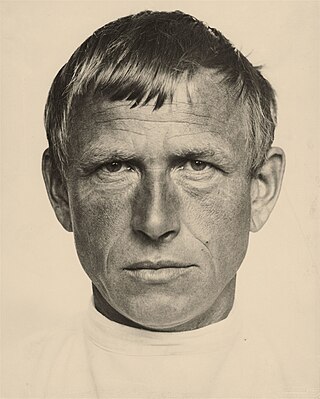
Wilhelm Heinrich Otto Dix was a German painter and printmaker, noted for his ruthless and harshly realistic depictions of German society during the Weimar Republic and the brutality of war. Along with George Grosz and Max Beckmann, he is widely considered one of the most important artists of the Neue Sachlichkeit.
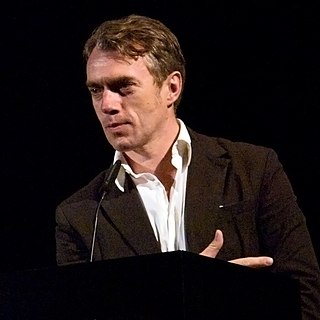
Neo Rauch is a German artist whose paintings mine the intersection of his personal history with the politics of industrial alienation. His work reflects the influence of socialist realism, and owes a debt to Surrealists Giorgio de Chirico and René Magritte, although Rauch hesitates to align himself with surrealism. He studied at the Hochschule für Grafik und Buchkunst Leipzig, and he lives in Markkleeberg near Leipzig, Germany and works as the principal artist of the New Leipzig School. The artist is represented by Galerie EIGEN + ART Leipzig/Berlin and David Zwirner, New York.

The Städel, officially the Städelsches Kunstinstitut und Städtische Galerie, is an art museum in Frankfurt, with one of the most important collections in Germany. The museum is located at the Museumsufer on the Sachsenhausen bank of the River Main. The Städel Museum owns 3,100 paintings, 660 sculptures, more than 4,600 photographs and more than 100,000 drawings and prints. It has around 7,000 m2 (75,000 sq ft) of display and a library of 115,000 books.

The Hamburger Kunsthalle is the art museum of the Free and Hanseatic City of Hamburg, Germany. It is one of the largest art museums in the country. It consists of three connected buildings, dating from 1869, 1921 (Kuppelsaal) and 1997, located in the Altstadt district between the Hauptbahnhof and the two Alster lakes.
Michael Buthe was a German artist who lived and worked between Germany and Morocco. He exhibited widely throughout Europe during his life and is known for his eclectic and prolific oeuvre which encompasses painting, sculpture, and installation.

Jürgen Partenheimer is a German artist. His works span a range of media, from painting, drawing, sculpture, printmaking, artists books, texts and installations. He lives and works in Germany and Italy.
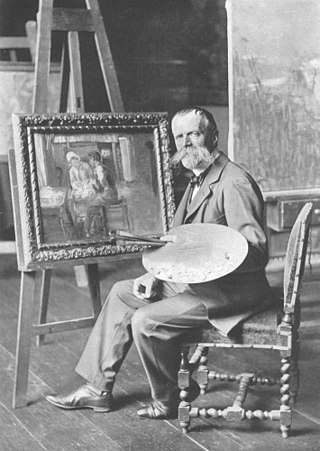
Fritz von Uhde was a German painter of genre and religious subjects. His style lay in-between Realism and Impressionism, he was once known as "Germany's outstanding impressionist" and he became one of the first painters to introduce plein-air painting in his country.

The Kunstmuseum Basel houses the oldest public art collection in the world and is generally considered to be the most important museum of art in Switzerland. It is listed as a Swiss heritage site of national significance.
Necmi Sönmez is a Turkish-German curator, art critic and writer. He lives and works in Düsseldorf.

The Kunstmuseum Bonn or Bonn Museum of Modern Art is an art museum in Bonn, Germany, founded in 1947. The Kunstmuseum exhibits both temporary exhibitions and its collection. Its collection is focused on Rhenish Expressionism and post-war German art. It is part of Bonn's "Museum Mile".

The Bucerius Kunst Forum is an international exhibition centre in Hamburg, Germany, founded in 2002 through the ZEIT-Stiftung Ebelin und Gerd Bucerius foundation. It is named after Gerd Bucerius and his wife, and located directly beside the Hamburg Rathaus. The exhibition centre shows 3 - 4 exhibitions per year, in co-operation with other museums and collections. The exhibition centre participates in the Long Night of Museums.
Max Uhlig is a German painter. He won the Hans Theo Richter-Preis of the Sächsische Akademie der Künste in 1998.
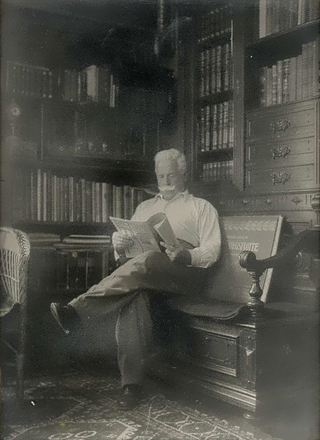
Alexander Kircher was an Austrian-German marine and landscape painter and illustrator. Many of his paintings can be seen in museums in Germany, Austria, Croatia, and Slovenia while others are held by private owners in those same countries, as well as the United States of America, Great Britain, Scandinavia, and Greece.

Various & Gould is a Berlin-based artist duo.
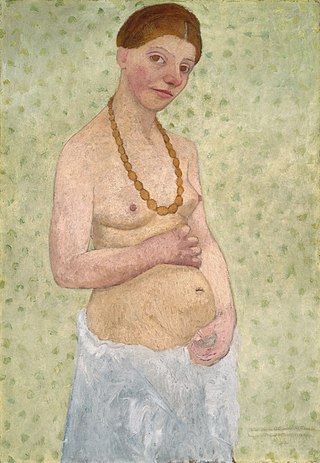
Self-Portrait at 6th Wedding Anniversary, also known as Self-Portrait on the sixth wedding anniversary and Self-Portrait on the sixth anniversary of marriage, is a painting by the German painter Paula Modersohn-Becker, one of the most important early expressionists, from the time of her stay in Paris in 1906.
Ida Ekblad is a Norwegian artist who works across painting, sculpture, installation and poetry.
Ulrich Erben is a German painter. From 1980 to 2005, he was a Professor of Painting at the Kunstakademie Münster. He is known as a master of the color field style of abstract painting, closely related to abstract expressionism, in which he creates tension between a defined surface structure, his own method of applying paint to a canvas, and the relationship of various shades of white or color to each other in their placement as part of a composition on the flat plane of a canvas. In 1986 and 2008, he was awarded the Konrad-von-Soest Prize for Visual Arts by the Landschaftsverband Westfalen-Lippe.

"Untitled" is a work of art by Félix González-Torres, currently in the collection of the Art Institute of Chicago in Chicago, United States. The work is one of the twenty "candy works" in Gonzalez-Torres's oeuvre. The candy works are manifestable; the artworks are not physically permanent, they can exist in more than one place at a time and can vary from one installation to the next in response to the decisions made by the exhibitor, the interactions of audiences, and changing circumstances. This candy work has an ideal weight of 175 pounds (79 kg).

Julius Freund was a German entrepreneur and art collector persecuted by the Nazis because he was Jewish.

Kyung-hwa Choi-ahoi is a South Korean graphic artist, author and university teacher living in Germany, with a focus on drawing. From 2015 to 2019, she was a professor for drawing at the University of the Arts Bremen and has been a professor for drawing at the Weißensee Academy of Art Berlin since 2019. She lives in Hamburg and Berlin.















